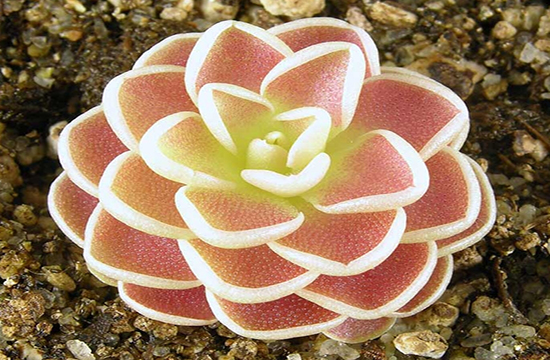
Zhiryanka is the Russian name for representatives of the genus Pingvikula ( Pinguicula ), in fact, which is a literal translation. Family: Pemphigus is the only genus of this family whose species have true roots.
Some types of fatwort are epiphytes . This means that the flower has adapted to life on the host plant, but does not parasitize on it, but receives the substances necessary for life from the environment.

Zhiryanka is a herbaceous insectivorous plant, this way of feeding allows her to survive on poor soils of swampy and rocky areas, where she mainly lives. Under natural conditions, it grows in Europe, North Asia, North America, Central America.
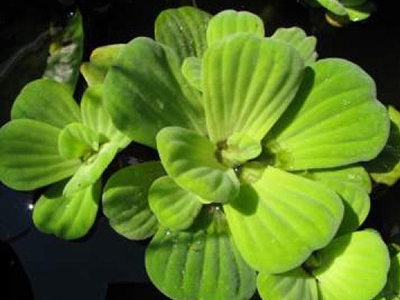
In the photo of the fat woman , you can see what the plant looks like. The leaves are entire, relatively thick and long, form a basal rosette.

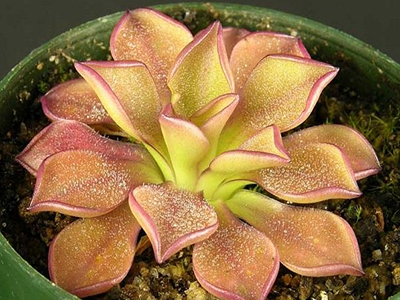

On the upper side of the leaves are numerous glands that secrete a sugary mucus containing enzymes that help digest insects. Its presence provides the leaves with a greasy, oily sheen, thanks to which the genus got its name.

It blooms depending on the species in summer, autumn or winter. The flowers are very beautiful, lilac. Also, the flower of the zhiryanka can have a pink, raspberry, blue, purple color, and occasionally white.
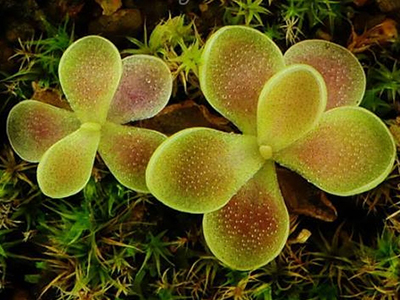
Species and varieties. In total, there are 73 types of fatwort. 5 Central American species are bred as domestic, their description is presented below.
Zhiryanka ordinary ( Pinguicula vulgaris ) – light green leaves on the upper side, tapering towards the base. The color of the flower corolla is raspberry-purple, violet.
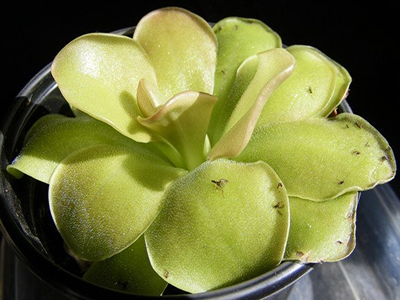
P. moranensis – grows two rosettes of leaves during the growing season. Summer is painted in yellow-green or burgundy color, the leaves are abundantly covered with glands. Winter leaves are short, hairy. Flowering is white or purple.
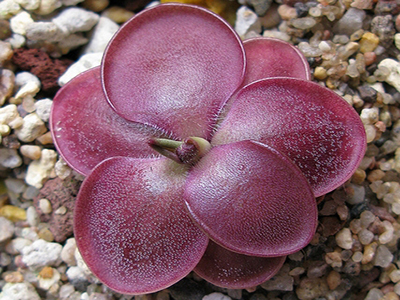
P. cyclosecta – distinguished by a silvery color of leaves with a purple edge, blurring as it approaches the middle. The leaves are small, up to 3 cm in diameter, spirally assembled into an almost flat rosette. The flowers are large, bright purple.

P. gypsicola – got its name due to its adaptation to growth on gypsum rocks, it is distinguished by its small rosette size. Unlike other species, it is very undemanding to the level of humidity. The leaves are not round, but elongated.
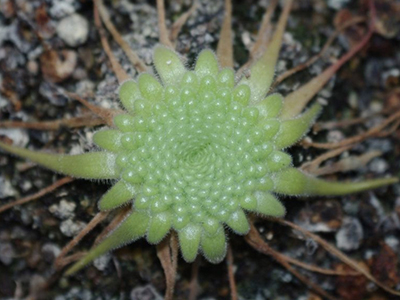
P. alpina – the edges of yellowish leaves are bent upwards, the flower grows straight, which is a diagnostic sign of the plant. The color of the flower is white with yellow.
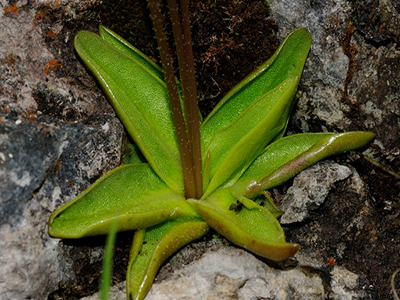
Breeders successfully breed decorative varieties.
The most popular: Zhiryanka “Veser”,

P. mexican (P. mexicana),
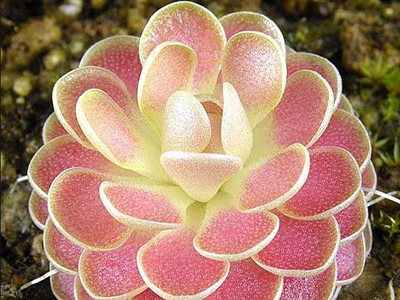
P. tailed (P. caudata),

“Tina”,
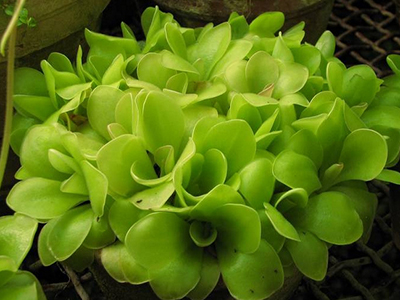
“Aphrodite”,

Seductora.
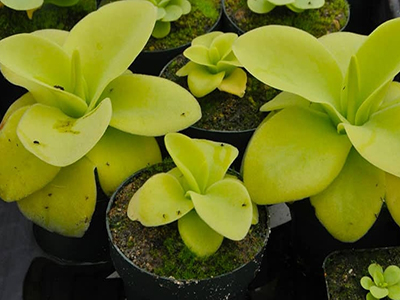
They are valued for the memorable color of leaves and petals. For example, the Veser variety has pale pink leaves, and the Seductora varieties are notable for their bright purple pattern on lilac flower petals.
Fatty care and plant propagation
Compared to its closest relatives, the insectivorous ornamental butterwort is easier to care for and adapts better to home conditions.
requirements for environmental conditions. Zhiryanka is a photophilous plant that grows well in partial shade. The location of the pot should be well ventilated, the flower needs constant access to fresh air. Drafts do not cause much harm. The flower feels good in the room thermal range and does not go to rest, so the temperature in winter should not be lower than 8-12 ° C, in summer the interval of 25-30 ° C is optimal. Humidity is required high, in summer the pot with the plant is placed in a pan with wet pebbles. Due to the humid and warm atmosphere, the plant takes root well in terrariums. It is impossible to spray the penguicula, as the water will wash away the sticky secret from the leaves.
Caring for a fatty is not burdensome. Feeding with fertilizers is not required, as the plant feeds on insects. Moderate watering, as the plant does not tolerate waterlogging. As with any predators accustomed to mineral-poor soil, distillate should be used, although the butterwort can tolerate watering with regular tap water. Water only through the pan, maintaining the average soil moisture.
The substrate is very light: leafy earth, humus, clay and sand (2:1:1:1). You can use the classic substrates for insectivorous plants based on peat. Since the plant develops slowly, there is no need to repot it often: once a year or two is enough. The transplant process is simple: the flower is removed from the pot along with the soil clod and the root system is carefully cleaned of the old soil. They are placed in a new container, already filled with soil mixture with a pre-prepared hole in which the roots of the plant can be comfortably placed without damaging or crushing them. The cavities are filled with a loosened substrate, a one-time moderate strait is made with distilled water. It is good to place the zhiryanka in a glass vessel.
Reproduction. Subsidiary rosettes, in the sand, at a temperature of 20-22 ° C.
A daughter rosette is formed when the plant is preparing for winter: it can be divided and planted as a separate flower. Reproduction is carried out before the spring activation of growth, otherwise, when dividing, the fat woman will suffer greatly.
Pingvikula does not suffer from diseases and pests, which greatly simplifies its maintenance.







